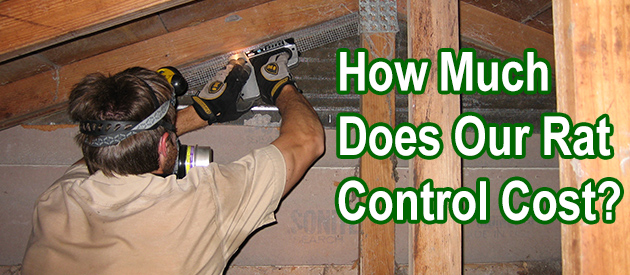Lucas County, Toledo Rat Control Situation:
Hi David- Thank you very much for your site. It has been extremely helpful. I caught my first and I hope only rat tonight (I know that's doubtful) due to your trapping advice. That said, I need advice on how to deal with rats burrowing into dirt basements. I have a half basement with a dirt crawl space and a narrow dirt trench around the perimeter for drainage. We found a rat a week ago and saw it has burrowed two holes outside down into the basement. Obviously it opened it up after we filled it in. Short of getting a new foundation I have no clue what to do. The best advice I have found was to put hardware paper down but that would be difficult in the crawl space. I spoke with a professional trapper in Toledo OH and he said there wasn't much I could do about them getting in other than keeping the traps set. We have lived here 8 years and never have seen a rat before. Mice yes but we have worked hard to close up the holes but clearly this is a different ball game. We are in a rural area and there are no dumpsters and the neighbors are clean etc. So I do not think it's a matter of cleanliness. Any advice you could give would be more than appreciated. And again, thank you for your site!!
I have sent a picture of the droppings I found, is it from a rat? I have set 2 traps in my attic and rat poison in saucers some of which has been eaten, but still have the rat or rats. I don't know what to do next buy some more poison? as I've run out. I did not want to pay a pest control company as I think normally they just use poison anyway, but if I cant get rid of them will have to. Shall I put the traps where the droppings were seen. This is terrible I can hear it or them at night in the attic, and would appreciate your advice.
Hi David! Thanks for your site and all of the useful info. I searched for the following for days, and still have nothing. How long do diseases remain "alive" in rat feces ? I have evidence of rat nesting in my outdoor storage shed that I first noticed about 6 months ago. I plugged the point of entry with steel wool and have not seen any activity since. I plan to clean the disturbed area and discard the damaged things. My question is, considering the age of the feces, is it and the contaminated area still potentially toxic or just ugly dirty !?
Toledo Rat Control Tip of The Week
Why Glue Traps Are An Inhumane Option For Rats
Glue Traps Won't Kill An Animal:
A glue trap will not humanely kill an animal; the glue is not toxic in any way. A glue trap merely traps the animal in one place and ensures that over the course of several days the animals will die of dehydration, starvation, or eventually suffocation. Many animals end up removing their own skin and fur to get away. Some rats will even take off some of their limbs trying to get free and can be successful in doing so with glue traps.
They Can Be Harmful To Your Pets:
Getting a pet stuck in a glue trap can be just as damaging. If your pet happens to stumble across one of these traps they could end up with it stuck to their fur and the need for shaving or immediate medical care.
They Lead To Harmful Smells In Your Home:
Because the animal will likely die of suffocation this can often lead to the glue trap starting to smell depending on the area of your home that it is in. Rather than having harmful odors throughout your home, it would be wise for you to consider a different option that is much faster for killing a rat.
They Don't Remove The Problem:
Glue traps don't target nests and they don't take away the chance that rats could continue to breed and increase their numbers. Choosing a different type of trap could be a better option for targeting parents that can breed in the area.
They Don't Seal Up Other Areas Where Rats Could Get In:
A glue trap is a temporary solution and it will only work on the rats that you have inside your home. If rats find a different area to get into or they are able to burrow deeper, the glue trap will not stop them.
Rats Are Quite Intelligent:
If you have a glue trap that's in a regular spot, rats may soon start to avoid it over time. No matter how tempting the glue bait may seem, a rat may actively avoid a trap after it's been in an area for some time.


